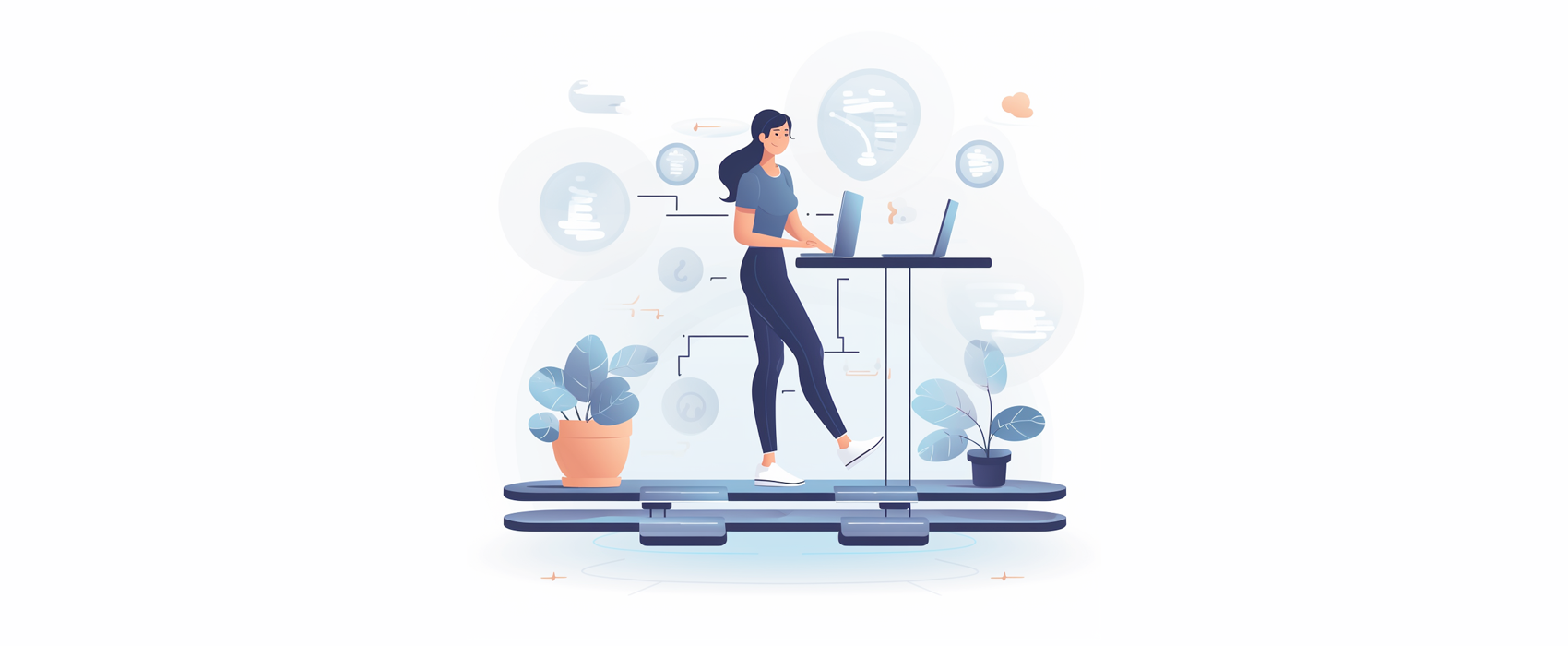Hello, friends!
Today, I wanted to share some thoughts on standing desks and walking pads. These tools have been gaining momentum in the productivity and ergonomic workspace landscape. I could certainly not imagine living without it.
The question is, do they genuinely enhance productivity and clarity of thinking?
1. Standing Desks: A Rise in Productivity?
Standing desks are often recommended as an antidote to the so-called 'sitting disease'—the health issues linked to prolonged sedentary behaviour, such as obesity, cardiovascular problems, and certain cancers. But beyond their health benefits, what impact do they have on productivity?
These findings indicate that use of stand-capable desks as ergonomic interventions to improve physical health among employees may also positively impact their work productivity. [1]
2. Stepping Up with Walking Pads
Combining Walking pads or treadmill desks takes the idea a notch higher by enabling light physical activity while working. The gentle movement is thought to stimulate brain function.
I certainly feel I can focus much better on certain tasks. While I do not use a walking pad while I’m in a video call - mostly because I would feel awkward, I use it for most of my other activities. Specifically when preparing for my AWS Solutions Architect Professional cert, I would have probably gone nuts if I had to watch hours of videos while sitting still.
3. Impact on Clarity of Thinking
An intriguing aspect of integrating movement into the workspace is its potential impact on clarity of thinking. Researchers from Stanford University found that walking, whether indoors or outdoors, significantly boosted creative output. More movement can lead to increased blood flow and improved oxygenation to the brain, potentially aiding thought processes and problem-solving. [2]
4. Personal Experiences and Practicalities
As someone always experimenting with productivity techniques, I’ve found standing desks a beneficial tool in my workspace. The ability to switch postures seems to break the monotony and provide a different perspective. Adding a walking pad just elevated it to the next level.
However, it’s vital to introduce these changes gradually. Spending an entire day standing could lead to discomfort or musculoskeletal issues. As with many things in life, moderation is key.
Initially I didn’t even have a standing desk, I just put my notebook on a box.
Getting accustomed to walking pads can take a while, especially when maintaining focus on fine motor tasks. But once you adapt, they could be a great way to enhance activity levels, and possibly even creativity and mood.
5. Tailoring Tools to Your Needs
The research suggests that standing desks and walking pads can improve health and potentially foster productivity and clearer thinking. This is what I found, however their effectiveness can vary depending on the individual and the nature of the work tasks.
If you're considering these tools, remember they aren't a panacea for productivity or cognitive enhancement. They should be part of a broader approach, including proper sleep, regular breaks, and mindful task management (think pomodoro technique).
Ultimately, productivity isn't just about your equipment or setup; it's about managing your energy and focus effectively. The primary goal should always be to work smarter, not harder.
As always, remember that productivity is a journey, not a destination. Keep experimenting, keep exploring, and above all, keep moving!
Until next time!
[1] Published in IIE Transactions on Occupational Ergonomics and Human Factors | Gregory A. Garrett | 2016
[2] Published in Journal of Experimental Psychology: Learning, Memory, and Cognition, Vol. 40, No. 4, 1142–1152 | Marily Oppezzo and Daniel L. Schwartz | Stanford University | 2014

